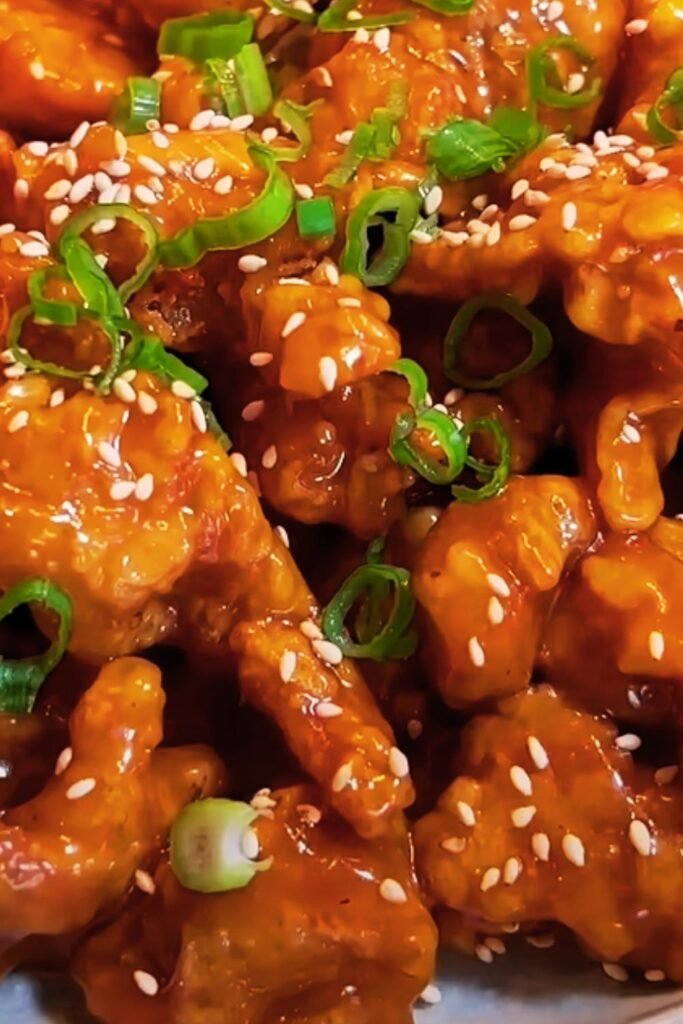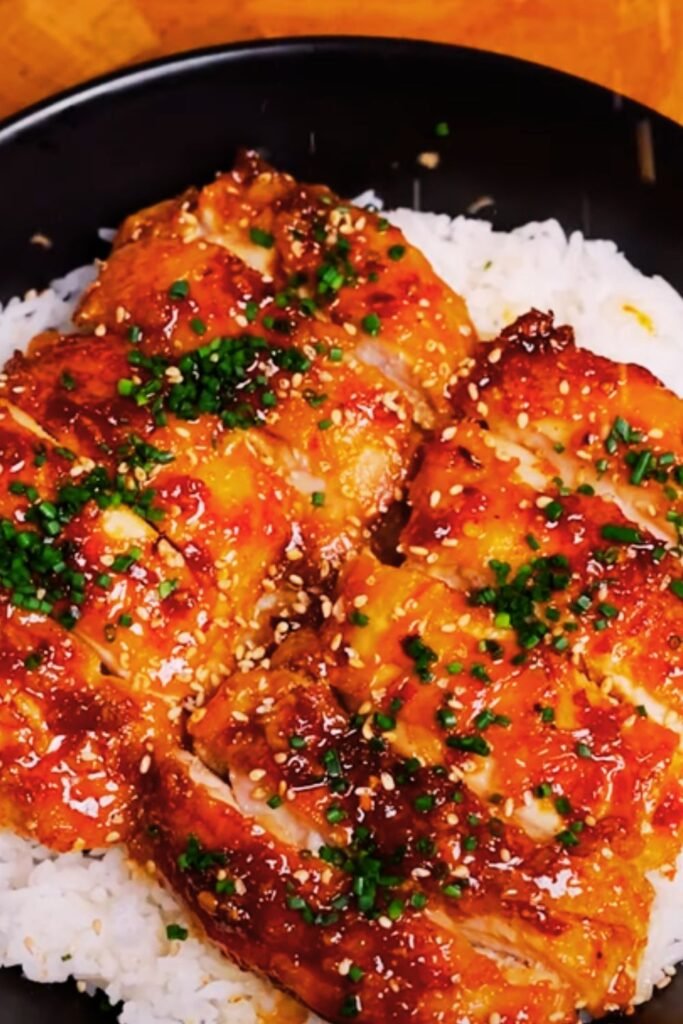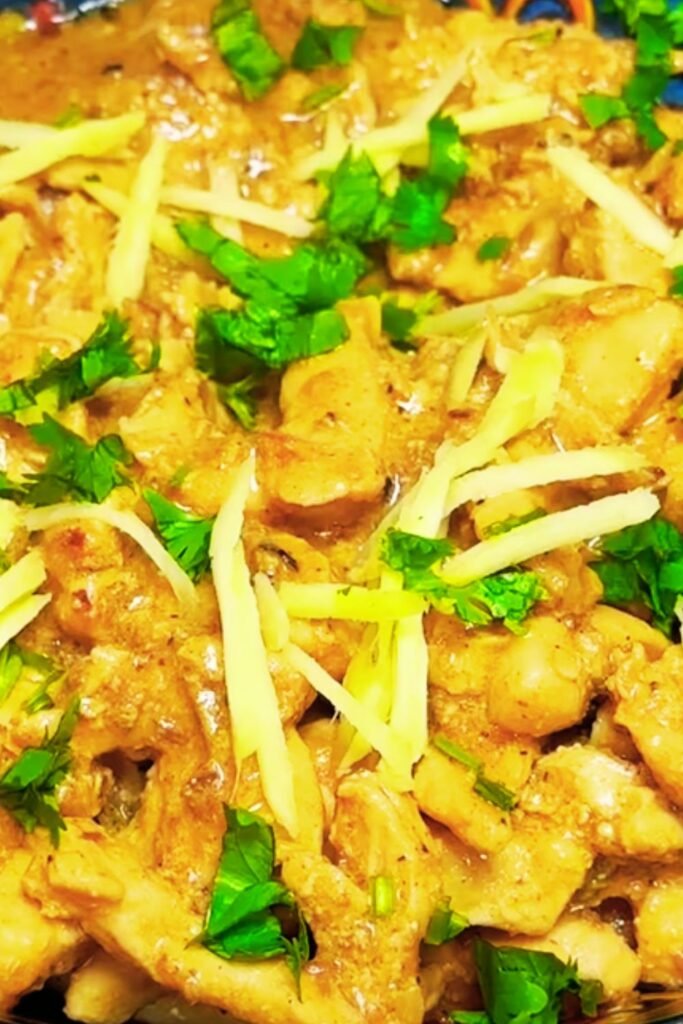There’s something magical about the combination of citrus and ginger that transforms an ordinary chicken dish into something extraordinary. When I first discovered this pairing, I was immediately hooked by how these bright, bold flavors complement the mild canvas of chicken. Today, I’m excited to share my favorite Citrus Ginger Chicken recipe that has become a staple in my home and never fails to impress dinner guests.
This dish brings together the zesty freshness of citrus fruits, the warming spice of ginger, and tender, juicy chicken in perfect harmony. What I love most about this recipe is its versatility—it works beautifully for both casual weeknight dinners and special occasions when you want to serve something impressive without spending hours in the kitchen.
What Makes This Citrus Ginger Chicken Special
Before diving into the recipe, let me share why this particular version stands out from others you might have tried:
- Triple Citrus Power: Instead of just using one citrus fruit, this recipe harnesses the unique qualities of oranges, lemons, and limes for a complex flavor profile.
- Fresh Ginger: We’re not taking shortcuts with powdered ginger—fresh ginger root provides an aromatic punch that transforms this dish.
- Perfect Balance: The sweetness from honey and brown sugar balances the tanginess of citrus and the heat of ginger and red pepper flakes.
- Versatile Cooking Methods: While I prefer the caramelization that comes from oven-baking, I’ll also share stovetop and grill variations.
Essential Ingredients

For the Marinade
- 1/4 cup fresh orange juice (approximately 1 medium orange)
- 2 tablespoons fresh lemon juice (approximately 1 small lemon)
- 1 tablespoon fresh lime juice (approximately 1 lime)
- 1 tablespoon orange zest
- 1 teaspoon lemon zest
- 3 tablespoons honey
- 2 tablespoons brown sugar
- 1/4 cup soy sauce (low-sodium preferred)
- 3 tablespoons olive oil
- 4 garlic cloves, minced
- 3 tablespoons fresh ginger, grated
- 1 teaspoon red pepper flakes (adjust to taste)
- 1/2 teaspoon black pepper
- 1 teaspoon sea salt
For the Chicken
- 2 pounds (about 1 kg) chicken thighs or breasts (bone-in or boneless work well)
- 2 tablespoons vegetable oil (if pan-searing)
For Garnish
- 3 green onions, thinly sliced
- 2 tablespoons fresh cilantro, chopped
- 1 tablespoon sesame seeds, toasted
- Citrus slices (orange, lemon, and lime)
Equipment You’ll Need
Let’s make sure you have everything ready before we start cooking:
- Large mixing bowl
- Whisk
- Measuring cups and spoons
- Zester or microplane
- Citrus juicer
- Garlic press (optional)
- Large ziplock bag or shallow dish for marinating
- Baking dish (if oven-baking)
- Tongs
- Meat thermometer
- Sharp knife and cutting board
Preparation Method
Step 1: Prepare the Marinade
The marinade is truly the heart and soul of this dish, so let’s make it with care:
- In a large mixing bowl, combine the orange juice, lemon juice, lime juice, and all the zests.
- Whisk in the honey and brown sugar until completely dissolved.
- Add the soy sauce, olive oil, minced garlic, grated ginger, red pepper flakes, black pepper, and sea salt.
- Whisk everything together until well combined and slightly thickened.
Chef’s Tip: For maximum flavor extraction, I like to microwave the citrus fruits for about 10 seconds before juicing—this helps release more juice with less effort.
Step 2: Marinate the Chicken
- Pat the chicken pieces dry with paper towels. This ensures better marinade absorption and improves browning.
- Place the chicken in a large ziplock bag or shallow dish.
- Pour the marinade over the chicken, making sure each piece is well-coated.
- Seal the bag or cover the dish and refrigerate for at least 2 hours, preferably 4-6 hours. For the most intense flavor, marinate overnight.
- Turn the chicken occasionally to ensure even marinating.
Chef’s Tip: If you’re short on time, you can score the chicken pieces with shallow cuts to help the marinade penetrate faster.
Step 3: Cook the Chicken
Oven-Baked Method (My Preferred Approach)
- Preheat your oven to 375°F (190°C).
- Remove the chicken from the marinade, reserving the liquid.
- Place the chicken pieces in a baking dish, skin side up (if using skin-on pieces).
- Pour about 1/4 cup of the marinade over the chicken, reserving the rest.
- Bake for 30-40 minutes for boneless pieces or 40-50 minutes for bone-in pieces, until the internal temperature reaches 165°F (74°C).
- For beautifully caramelized skin, broil on high for the last 2-3 minutes.
Stovetop Method
- Heat 2 tablespoons of vegetable oil in a large skillet over medium-high heat.
- Remove the chicken from the marinade, reserving the liquid.
- Place chicken pieces in the hot skillet and cook for 5-7 minutes per side, until golden brown.
- Reduce heat to medium-low, add 1/4 cup of the reserved marinade, and cover.
- Cook for an additional 8-10 minutes (for boneless) or 15-20 minutes (for bone-in) until the internal temperature reaches 165°F (74°C).
Grilling Method
- Preheat your grill to medium-high heat.
- Remove the chicken from the marinade, reserving the liquid.
- Oil the grill grates to prevent sticking.
- Grill the chicken for 6-8 minutes per side (for boneless) or 10-12 minutes per side (for bone-in), until the internal temperature reaches 165°F (74°C).
- Baste with reserved marinade during the last few minutes of cooking.
Step 4: Prepare the Sauce
- Pour the remaining marinade into a small saucepan.
- Bring to a boil over medium heat.
- Reduce heat and simmer for 5-7 minutes until the sauce thickens slightly.
- Strain through a fine mesh sieve if you prefer a smoother sauce.
Safety Note: Since we’re using the marinade that had raw chicken in it, it’s crucial to bring it to a full boil to ensure food safety.
Step 5: Serve and Garnish
- Place the cooked chicken on a serving platter.
- Drizzle with the thickened sauce.
- Garnish with sliced green onions, chopped cilantro, toasted sesame seeds, and citrus slices.
Nutritional Information
For those mindful of their nutritional intake, here’s a breakdown of what you’re getting per serving (assuming 4 servings from this recipe):
| Nutrient | Amount per Serving |
|---|---|
| Calories | 420 kcal |
| Protein | 38g |
| Carbohydrates | 18g |
| Sugars | 15g |
| Fat | 22g |
| Saturated Fat | 5g |
| Fiber | 1g |
| Sodium | 820mg |
| Vitamin C | 28% DV |
| Iron | 12% DV |
Note: Values are approximate and will vary based on specific ingredients and portion sizes.
Serving Suggestions

This Citrus Ginger Chicken pairs beautifully with:
Starches
- Jasmine or basmati rice
- Coconut rice
- Quinoa
- Roasted sweet potatoes
- Garlic mashed potatoes
Vegetables
- Steamed broccoli with a light drizzle of sesame oil
- Stir-fried bok choy or Chinese cabbage
- Roasted carrots with a honey glaze
- Grilled asparagus
- Asian-style green beans
Sauces & Condiments
- Extra sauce from the recipe
- Sweet chili sauce
- Sriracha for heat lovers
- Kimchi for a fermented kick
Make-Ahead and Storage Tips
One of the things I love about this recipe is how well it works for meal prep. Here’s how to make the most of it:
Make-Ahead Options
- Prepare the marinade up to 3 days in advance and store in the refrigerator.
- Marinate the chicken overnight for maximum flavor and next-day convenience.
- Cook a double batch and use the leftovers for lunches throughout the week.
Storage Guidelines
- Refrigerate cooked chicken in an airtight container for up to 3 days.
- Freeze cooked chicken for up to 3 months. Thaw overnight in the refrigerator before reheating.
Reheating Instructions
- Microwave: Cover with a damp paper towel and heat in 30-second intervals until warmed through.
- Oven: Cover with foil and warm at 325°F (165°C) for 15-20 minutes.
- Stovetop: Slice the chicken, add a splash of water or chicken broth, cover, and gently warm over medium-low heat.
Variations to Try
The beauty of this recipe is its adaptability. Here are some exciting variations I’ve experimented with:
Spicy Citrus Ginger Chicken
- Double the red pepper flakes
- Add 1 tablespoon of sambal oelek or sriracha to the marinade
- Garnish with thinly sliced fresh chili peppers
Tropical Citrus Ginger Chicken
- Add 1/4 cup pineapple juice to the marinade
- Include 1 cup cubed fresh pineapple during the last 10 minutes of cooking
- Garnish with toasted coconut flakes
Mediterranean Citrus Ginger Chicken
- Add 1 tablespoon of oregano and 1 teaspoon of rosemary to the marinade
- Include olives and cherry tomatoes during cooking
- Serve with a side of tzatziki
Citrus Ginger Chicken Stir-Fry
- Slice the chicken into strips before marinating
- Stir-fry with bell peppers, snow peas, and water chestnuts
- Serve over rice or noodles
Common Mistakes to Avoid
In my years of making this dish, I’ve learned what can go wrong and how to prevent it:
| Mistake | Consequence | Solution |
|---|---|---|
| Not zesting before juicing | Difficulty in zesting juiced citrus | Always zest first, then juice |
| Marinating too long | Chicken can become mushy | Limit marinade time to 24 hours max |
| Using bottled citrus juice | Significantly less flavor | Always use fresh-squeezed juice |
| Cooking at too high heat | Burnt exterior, raw interior | Cook at moderate heat for even doneness |
| Not patting chicken dry | Steam instead of caramelization | Always pat chicken dry before cooking |
| Skipping the sauce reduction | Thin, watery sauce | Take time to reduce the sauce properly |
| Not checking internal temperature | Risk of undercooked chicken | Use a meat thermometer for safety |
Chef’s Special Tips

After making this dish countless times, I’ve discovered some special tricks that elevate it from good to unforgettable:
- Infuse the oil: Before mixing the marinade, warm the olive oil with some ginger slices and garlic for 5 minutes, then cool and strain. This infused oil adds another dimension of flavor.
- Citrus segments: Add fresh citrus segments (supremes) to the sauce during the last minute of simmering for bursts of juicy flavor.
- Brining: For exceptionally juicy chicken, especially breast meat, brine the chicken in saltwater for 1 hour before marinating.
- Rest the chicken: Allow the cooked chicken to rest for 5-10 minutes before serving. This redistributes the juices for maximum tenderness.
- Save the marinade: When making this recipe regularly, prepare extra marinade and freeze portions in ice cube trays for quick flavor boosters to other dishes.
Customizing for Dietary Needs
This recipe is naturally gluten-free if you use tamari instead of soy sauce. Here are other ways to adapt it:
Gluten-Free Version
- Replace soy sauce with tamari or coconut aminos
- Check that your brown sugar doesn’t contain any gluten additives
Dairy-Free
- This recipe is naturally dairy-free!
Low-Carb/Keto
- Omit the honey and brown sugar
- Use a keto-friendly sweetener like monk fruit or erythritol
- Serve with cauliflower rice instead of regular rice
Paleo
- Replace soy sauce with coconut aminos
- Use honey only, omit the brown sugar
- Ensure olive oil is cold-pressed and extra virgin
Breaking Down the Science
Understanding the science behind this recipe helps explain why it works so well:
- Acid tenderization: The citrus juices contain acids that help break down tough protein fibers in the chicken, resulting in more tender meat.
- Enzymatic action: Fresh pineapple (in the tropical variation) contains bromelain, an enzyme that further tenderizes meat proteins.
- Maillard reaction: The sugar in the marinade helps create that beautiful caramelization and complex flavors when the chicken is cooked at high temperatures.
- Flavor penetration: The salt and sugar in the marinade help the flavors penetrate deeper into the meat through osmosis.
- Oil as flavor carrier: The oil in the marinade helps carry fat-soluble flavor compounds from the spices deeper into the meat.
Questions & Answers
Over the years, I’ve received many questions about this recipe. Here are the most common ones:
Q: Can I use chicken wings for this recipe? Absolutely! Chicken wings work wonderfully with this marinade. Increase the cooking time by about 5-10 minutes and make sure to turn them frequently if grilling.
Q: Is there a way to make this recipe in a slow cooker? Yes! Place the marinated chicken in a slow cooker, add 1/4 cup of chicken broth, and cook on low for 4-5 hours or high for 2-3 hours. For crispy skin, place under the broiler for 3-5 minutes after slow cooking.
Q: Can I substitute the citrus fruits if I don’t have all three? Certainly. While the trio creates a complex flavor, you can use just oranges and lemons, or even just oranges in a pinch. Just maintain the same total amount of juice.
Q: How spicy is this dish? With 1 teaspoon of red pepper flakes, it has a mild-to-medium heat. Adjust according to your preference—omit for no heat or double for a spicier kick.
Q: Can I use this marinade for other proteins? Definitely! It works beautifully with pork tenderloin, shrimp, firm white fish, and even tofu. Just adjust the marinating time: 30 minutes for seafood, 2-3 hours for pork, and 1 hour for tofu.
Q: What if I don’t have fresh ginger? While fresh is best, you can substitute with 1 teaspoon of ground ginger in a pinch. The flavor won’t be as vibrant, but it will still be delicious.
Q: Can I make this without sugar? Yes, you can omit the sugar and use only honey, or replace both sweeteners with a sugar-free alternative like monk fruit sweetener or stevia to taste.
Q: Why did my sauce burn when reducing? This typically happens when the heat is too high. Always simmer gently when reducing the sauce, and stir frequently to prevent burning.
A Personal Note
I first discovered the magic of citrus and ginger together during a cooking class I took while traveling in Southeast Asia. The chef showed us how these simple ingredients could transform a humble chicken dish into something spectacular. I’ve been perfecting this recipe ever since, adapting it to my taste and sharing it with friends and family.
What makes me come back to this recipe time and again is its perfect balance of flavors and its ability to brighten even the dreariest of days. The aroma that fills my kitchen when making this dish never fails to lift my spirits and bring back wonderful memories of that cooking class halfway around the world.
I hope this Citrus Ginger Chicken brings as much joy to your table as it has to mine. Remember, cooking is both science and art—so feel free to make this recipe your own by adjusting it to your personal taste preferences. Happy cooking!